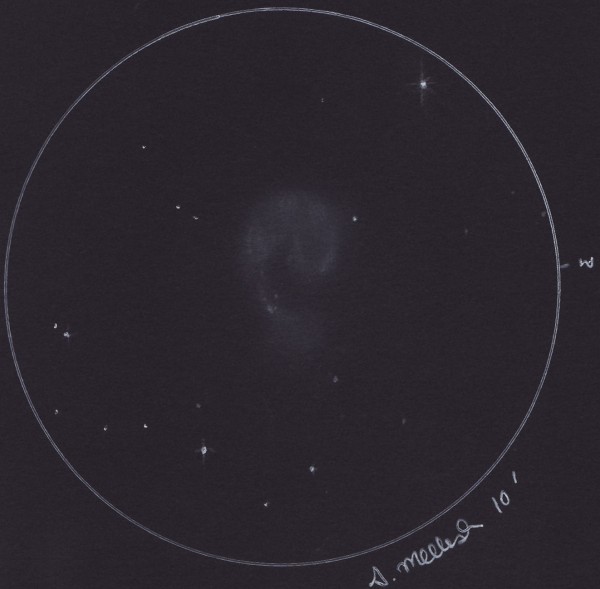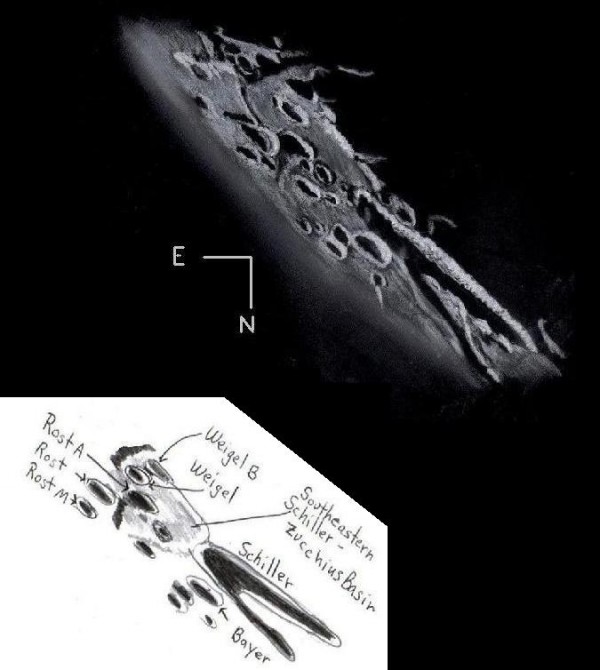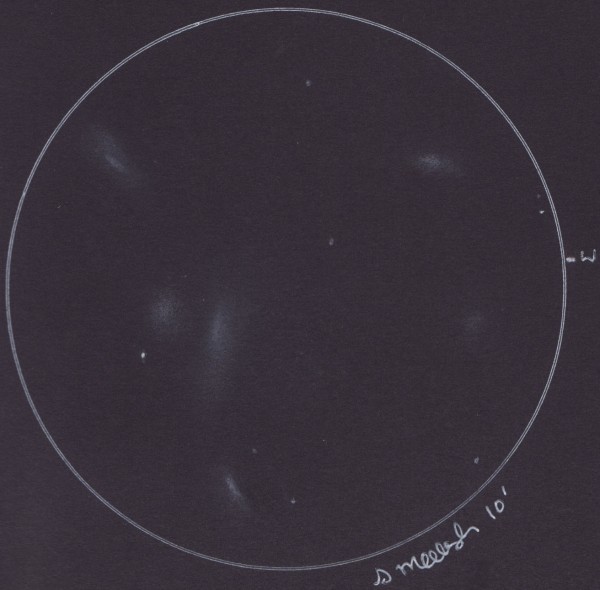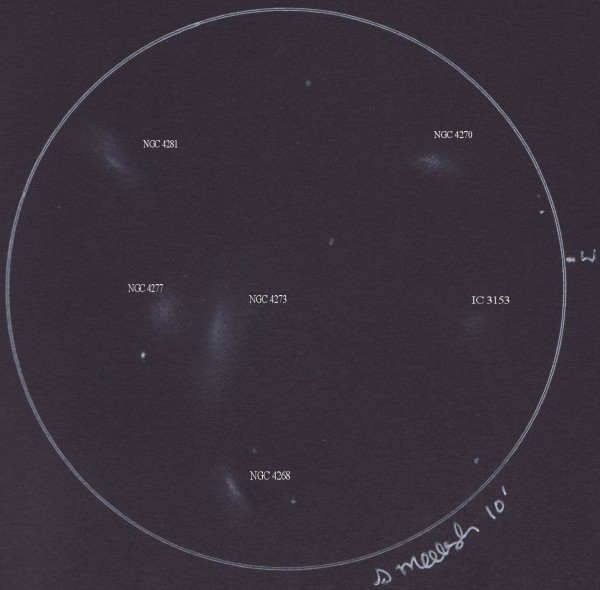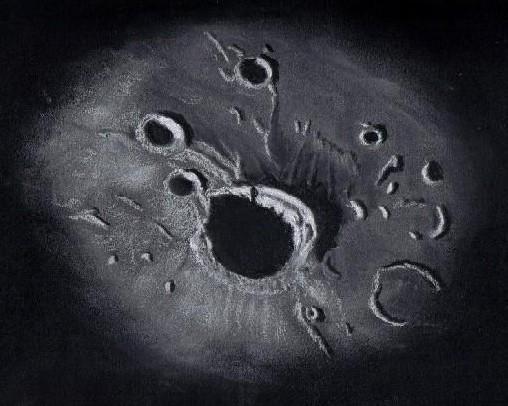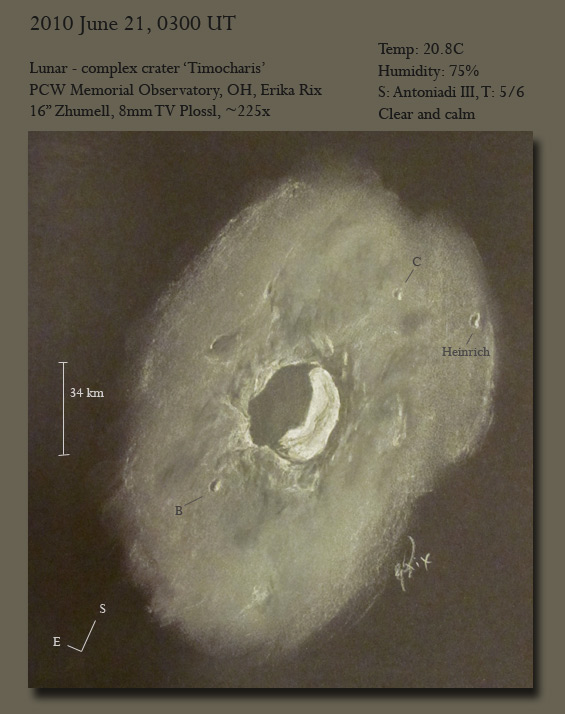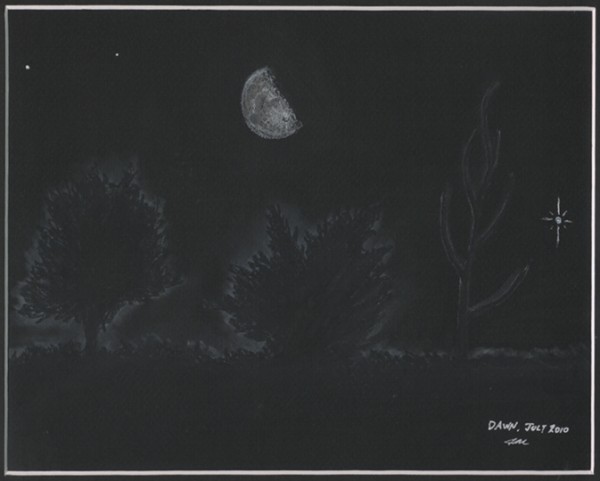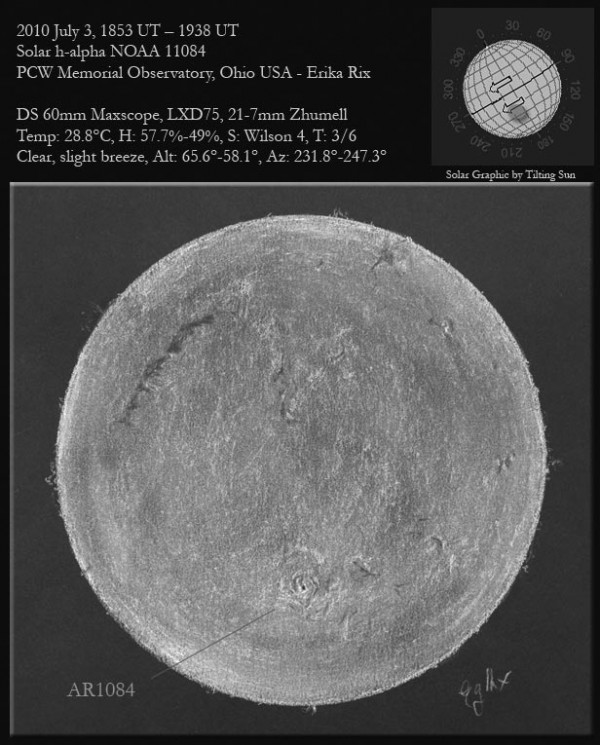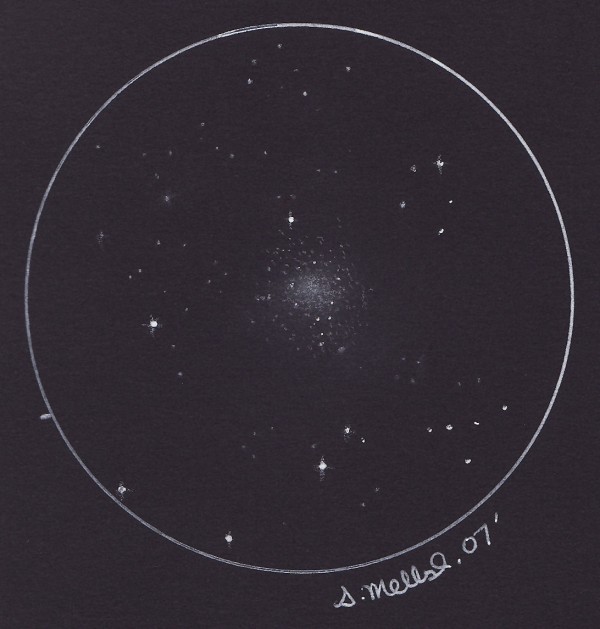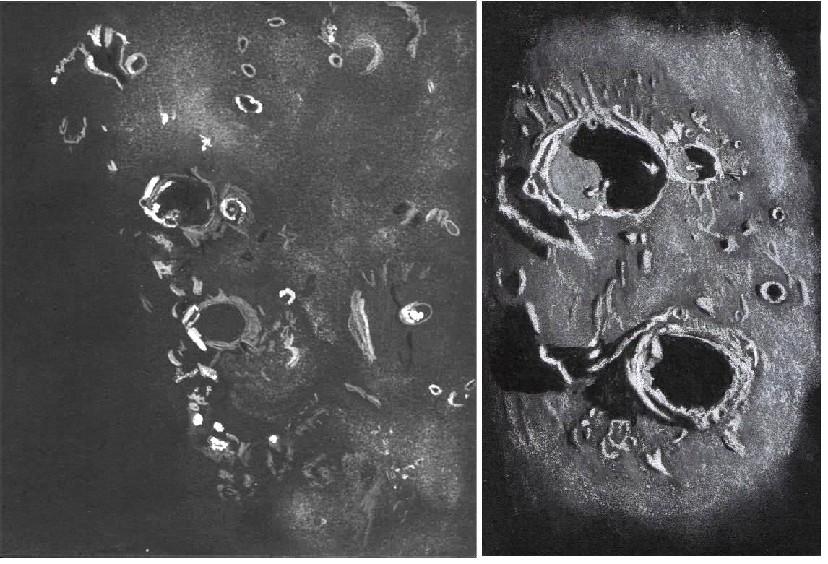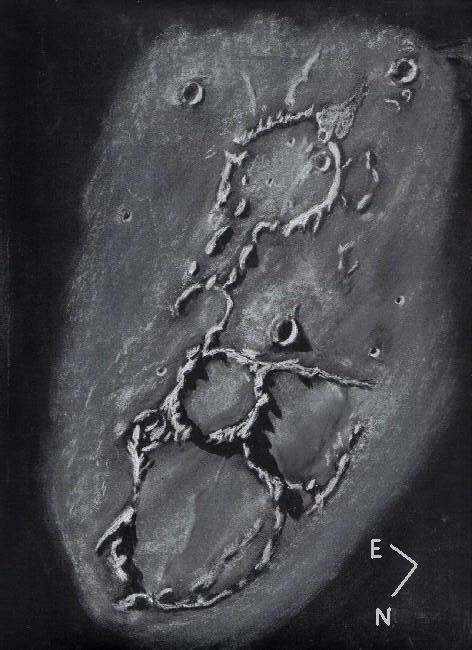NGC 4038/4039
“The Antennae”
Interacting galaxies
Corvus
13/05/10
Ilford NSW Australia
56cm f5 dobsonian telescope
Field: 17′
Magnification: 354x
Sky Quality Meter reading: 21:35
Black Canford paper
White oil pencil
White pastel pencil
White pastel chalk
White pen
Blending stump
The interacting galaxies NGC 4038/4039 are always good value in any size
telescope.
In the 56cm dob there was subtle detail visible without using averted
vision, I just wished the sky conditions were a bit better on the night.
The the protruding “Antennae” that are so spectacular in images were not
visible (which is not surprising).
When you look at the magnificent HST image of this object with all its
associated colours, and then look at the object in a large aperture dob
at fairly high magnification, its shape and form is not too dissimilar.
Scott Mellish
